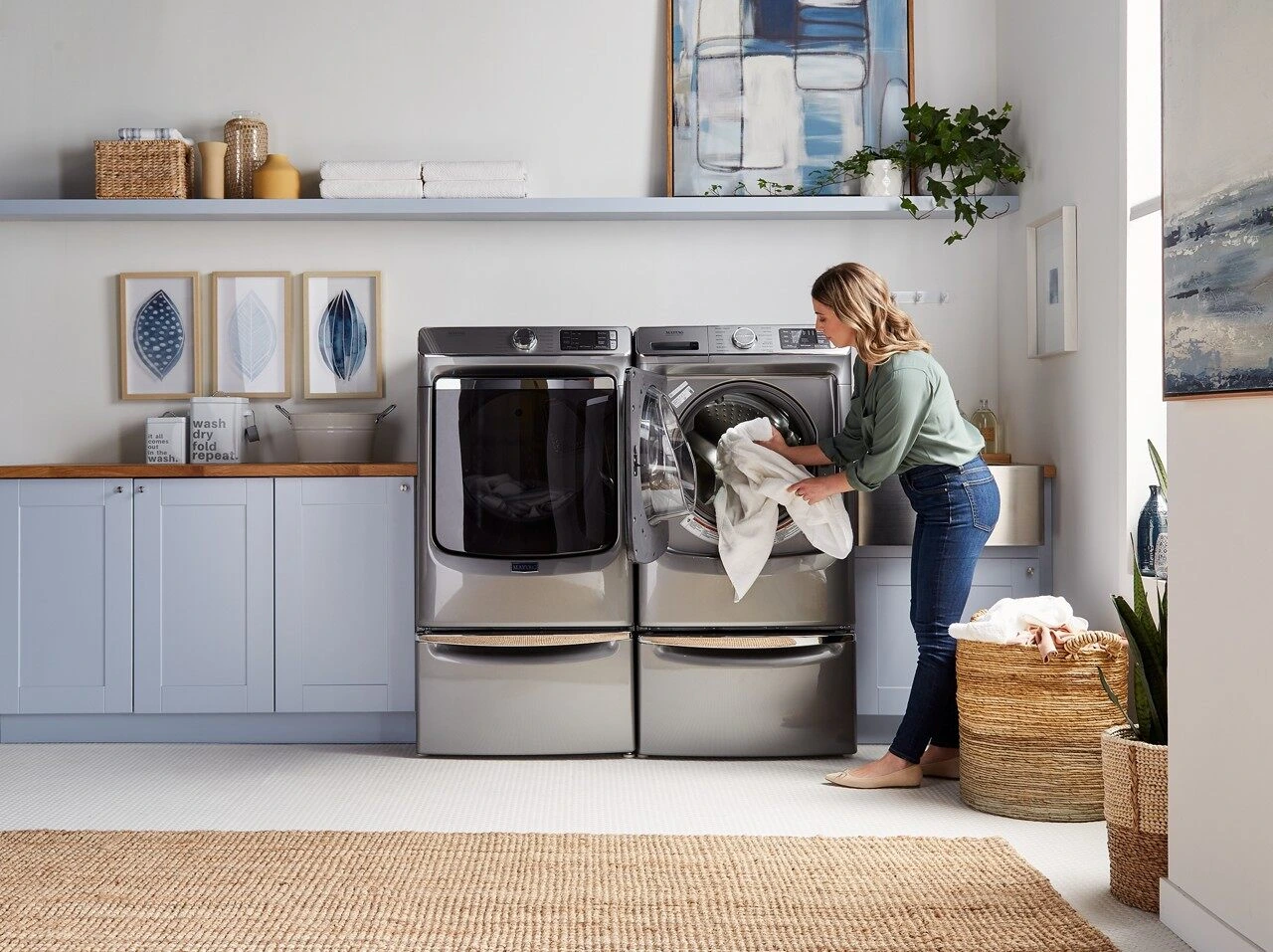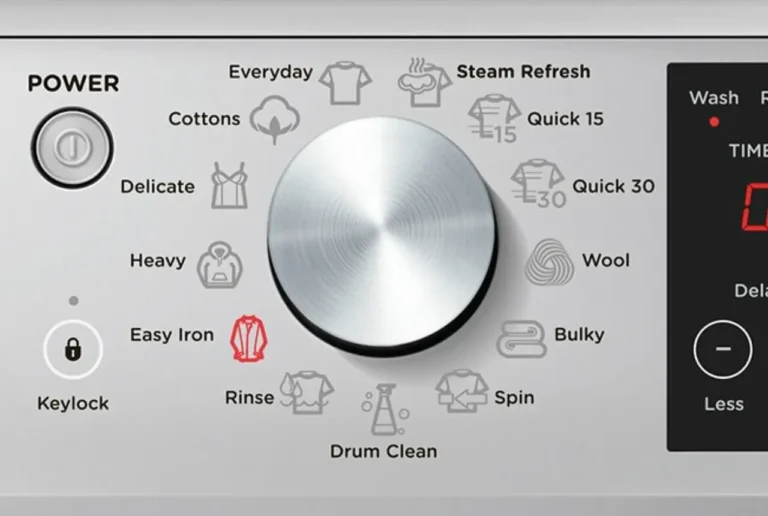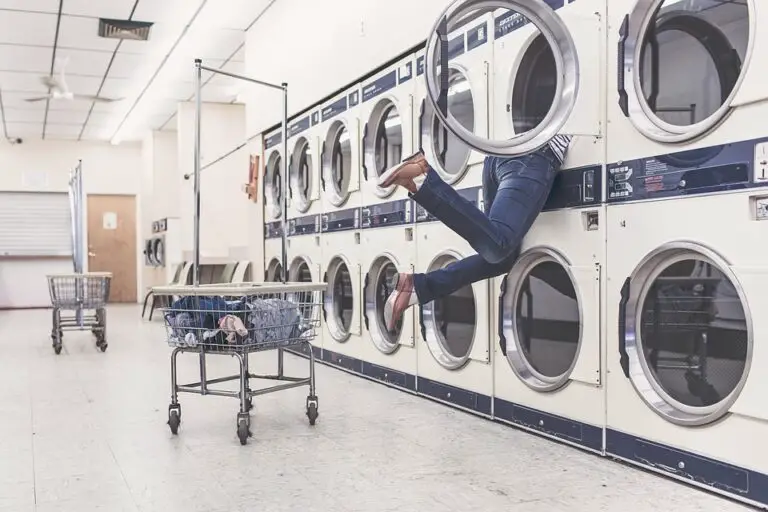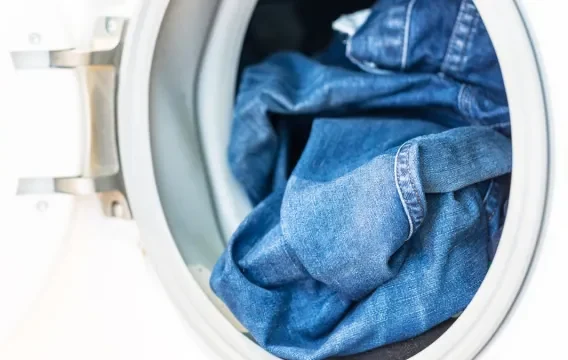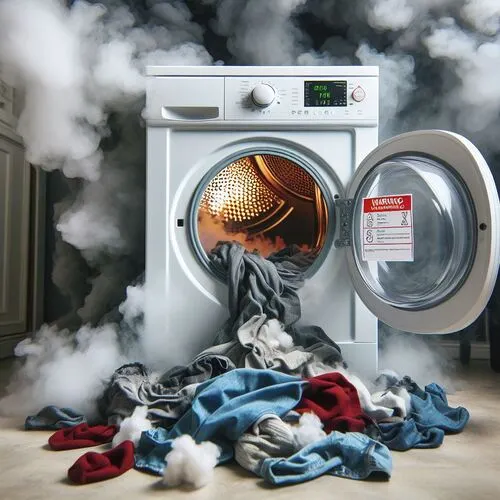6 DIY Fixes for Dryer Not Drying Clothes
Dryer Not Drying Clothes ? Is there anything more perplexing than tossing a load of freshly washed laundry into your trusty dryer, only to discover that your clothes come out disappointingly damp? It’s a common woe that many households face. The good news is, there are seven DIY fixes that can rescue your dryer from the brink and get your clothes dry and warm in no time. Let’s dive into the world of dryer troubleshooting and discover how to make your appliance work like a charm.
what are the Common Issues for Dryer Not Drying Clothes?
Before we get into the nitty-gritty of DIY fixes, let’s talk about the common problems that might be causing your drying clothesto remain frustratingly damp. It’s essential to understand the root causes before attempting any repairs. Here are some typical culprits:
- Dryer Airflow: The first and most vital element in the drying process is proper airflow. When your dryer can’t expel hot, moist air, your clothes won’t dry efficiently. Over time, lint and debris can accumulate in the vent and ducts, blocking the flow. Cleaning these components periodically can significantly improve your dryer’s performance.
- Moisture Sensor: Many modern dryers come equipped with moisture sensors that detect the level of moisture in your clothes. These sensors ensure that your dryer stops when your laundry is dry, preventing over-drying. However, they can become less effective due to residue buildup. To maintain the accuracy of the sensor, gently wipe it with a soft cloth and rubbing alcohol, ensuring it’s completely dry before using the dryer again.
- Heating Device: Your dryer’s heating element is responsible for warming the air used to dry your clothes. If it’s not functioning correctly, you’ll end up with frustratingly wet laundry. Check for visible damage or heating coil issues, and replace the element if necessary.
How to troubleshoot dryer not drying clothes?
how to Check Dryer Settings?
Sometimes, the solution is as simple as adjusting a few settings on your dryer. Make sure you’ve got these basics right:
| Dryer Settings | What to Adjust |
|---|---|
| Timer Dial or Timed Drying | Set it to the desired time. |
| Air Fluff Setting | Use the right setting for your load. |
Understanding your dryer’s settings is vital. Different fabrics and loads may require different settings for optimal drying. Utilize the timer dial to select the appropriate drying time, and set the fluff setting according to the type of load, whether it’s delicate fabrics or heavier items.
how to Clean Lint Filter?
A clogged lint filter can be a real showstopper, causing both inadequate drying and potential safety hazards. Here’s how to clean it properly:
- Locate the lint filter, usually inside the dryer door or at the top.
- Remove the lint screen.
- Give it a thorough clean under running water.
- Allow it to dry completely before reinserting it.
A clean lint filter not only prevents the inconvenience of wet clothes but also improves airflow, ensuring your dryer operates efficiently. Moreover, it reduces the risk of lint buildup in the dryer, which can pose a fire hazard.
how to Clean the Lint Filter Housing?
Sometimes, lint buildup can be a real culprit, going beyond the filter itself and causing a disruption in the airflow. Here’s a quick DIY solution:
- Unplug the dryer for safety.
- Remove the lint filter.
- Take a wire coat hanger and straighten it out.
- Create a small hook at one end and use it to remove lint from the housing.
This simple fix can enhance your dryer’s performance and eliminate the inconvenience of damp laundry. It’s essential to do this regularly to maintain optimal airflow and prevent the risk of fire.
how to Check Airflow from Dryer Vent Tube?
Stress the importance of proper airflow through your dryer’s vent tube. Weak airflow can be a real hindrance, causing extended drying times and potentially overheating your dryer as How Hot Does a Dryer Vent Get . Here’s what to do:
- Disconnect the vent tube from the dryer for a thorough check.
- Turn on the dryer and check for strong airflow.
- If the airflow is weak, inspect the vent tube for obstructions and give it a good clean.
Proper airflow is the name of the game for efficient drying and safety, you may ask if do gas dryers need to be vented. A clogged vent tube not only prolongs drying times but can also lead to overheating and potential fire hazards. Regularly inspect and clean the vent tube to keep your dryer operating optimally.

gas dryer not drying clothes
what are the Common Causes of a Gas Dryer Not Drying?
Before delving into solutions, let’s understand the potential culprits behind your gas dryer’s underperformance:
- Blocked Ventilation: In a gas dryer, proper ventilation is crucial for removing hot, moist air from the drum. If the vent or duct is clogged with lint or debris, it can significantly hinder the drying process.
- Gas Supply Issues: Gas dryers, of course, rely on a consistent supply of gas to heat the air. Any disruptions in the gas flow, such as a partially closed valve, can lead to inadequate drying.
- Faulty Igniter or Gas Valve: gas dryer not igniting common issue cause the igniter’s role is to ignite the gas, creating the heat necessary for drying. A malfunctioning igniter or gas valve can result in a lack of heat, leaving your clothes damp. Read about gas dryer shut off valve guide.
how to Check Gas Line?
For those with gas dryers, it’s crucial to ensure that gas flows smoothly Gas Dryer Hookup. A blocked or bent gas line can be a real buzzkill, causing not only drying issues but also safety concerns. Here’s how to check it:
- Turn off the gas supply for safety reasons.
- Inspect the gas line for any kinks or obstructions.
- Straighten the line if necessary.
- Turn the gas supply back on, ensuring it’s secure and free of leaks.
Maintaining a smooth gas flow is essential for gas dryers to operate efficiently and safely. dryer gas line size , If you’re not comfortable doing this yourself, consider hiring a professional to ensure the job is done correctly.
Electric Dryers not drying clothes
what are the Common Causes of Electric Dryers Not Drying?
Before we jump into the solutions, it’s essential to understand why your electric dryer might be underperforming:
- Clogged Ventilation: Just like gas dryers, electric dryers also rely on efficient ventilation to remove hot, moist air from the drum. A blocked vent or duct can significantly impede the drying process. you may wonder if can you use duct tape on a dryer vent.
- Overloaded Dryer: Sometimes, the issue is as simple as overloading the dryer causes dryer smells like burning. When the machine is packed to the brim, hot air can’t circulate efficiently, leading to inadequate drying.
- Heating Element Problems: electric dryer not heating issue causes Electric dryers have a heating element that generates the heat necessary for drying. If this element malfunctions, it can result in a lack of heat, leaving your clothes damp.
Other problems could be the Dryer Knob not working or dryer not spinning issue.
how to Check Circuit Breaker?
Electric dryers rely on a functioning circuit breaker. If it trips, your dryer won’t cooperate or dryer breaker keeps tripping. Here’s how to troubleshoot the circuit breaker:
- Locate your home’s circuit breaker panel.
- Find the breaker dedicated to your dryer and ensure it’s in the “on” position.
- If it has tripped, reset it.
A tripped circuit breaker can be a straightforward fix, but it’s essential to determine the cause of the trip to prevent it from happening again. If the issue persists, consult an electrician for a thorough inspection. Also check what size breaker for electric dryer guide post.
FAQ about Dryer Not Drying Clothes
Why is my dryer not getting clothes dry?
If your dryer isn’t effectively drying your clothes, there could be several reasons behind this issue. Common culprits include a clogged lint filter or vent, improper dryer settings, or a malfunctioning heating element. To address this problem, you can start by cleaning the lint filter, ensuring the vent is clear, and checking that you’ve selected the right settings for your load. If the problem persists, it might be necessary to inspect the heating element or seek professional help.
Why are my clothes still damp after drying?
If your clothes come out damp after a drying cycle, it’s usually a sign of inadequate heat or poor airflow. This could be due to a clogged lint filter or vent, an overloaded dryer, or a faulty heating element. Start by checking for lint blockages and ensuring the load size is appropriate. If the issue persists, consider inspecting wet clothes in the dryer and potentially replacing the heating element, or consult a professional for a thorough diagnosis. check if Can you leave clothes in the dryer overnight guide.
Why does my dryer take 2 hours to dry clothes?
A dryer that takes an excessively long time to dry clothes may indicate issues with ventilation, heating, or load size and dependds How Long Is a Dryer Cycle. First, check the lint filter and vent for obstructions, as clogs can impede airflow. Additionally, ensure you’re not overloading the dryer, which can prolong drying times. If these steps don’t resolve the problem, the heating element may be malfunctioning, and it’s advisable to have it inspected and potentially replaced.
How do you tell if your dryer vent is clogged?
Identifying a clogged dryer vent is crucial for maintaining efficient drying and preventing safety hazards. Here’s how you can tell if your dryer vent is clogged:
- Long Drying Times: If your dryer takes much longer than usual to dry clothes, it could be a sign of poor venting.
- Hot Dryer or Laundry Room: Excessive heat around the dryer or in the laundry room is a potential indicator of poor ventilation.
- Lint Accumulation: Check the exterior vent opening for lint buildup. Excessive lint around the vent is a clear sign of a clog.
- Burning Smell: If you detect a burning odor when using the dryer, it could be due to lint accumulating in the vent and overheating.
- Vent Hood Flap: Inspect the vent hood flap on the exterior of your home. It should open when the dryer is in use. If it remains closed during operation, it’s likely due to a blockage.
If you suspect a clogged dryer vent, it’s essential to address it promptly to improve drying efficiency and reduce the risk of fire. Regular vent cleaning and maintenance are crucial for dryer performance and safety.
Conclusion
Why Dryer Not Drying Clothes a dryer that’s not drying clothes can be a major headache, but there are often straightforward DIY fixes that can get it back on track. Remember to check your settings, keep the lint filter and housing clean, and consider the specifics of your dryer type, whether gas or electric.
Should these fixes not resolve the issue, don’t hesitate to seek professional repair. Your dryer will be back to its efficient self, and your laundry days will be hassle-free.
